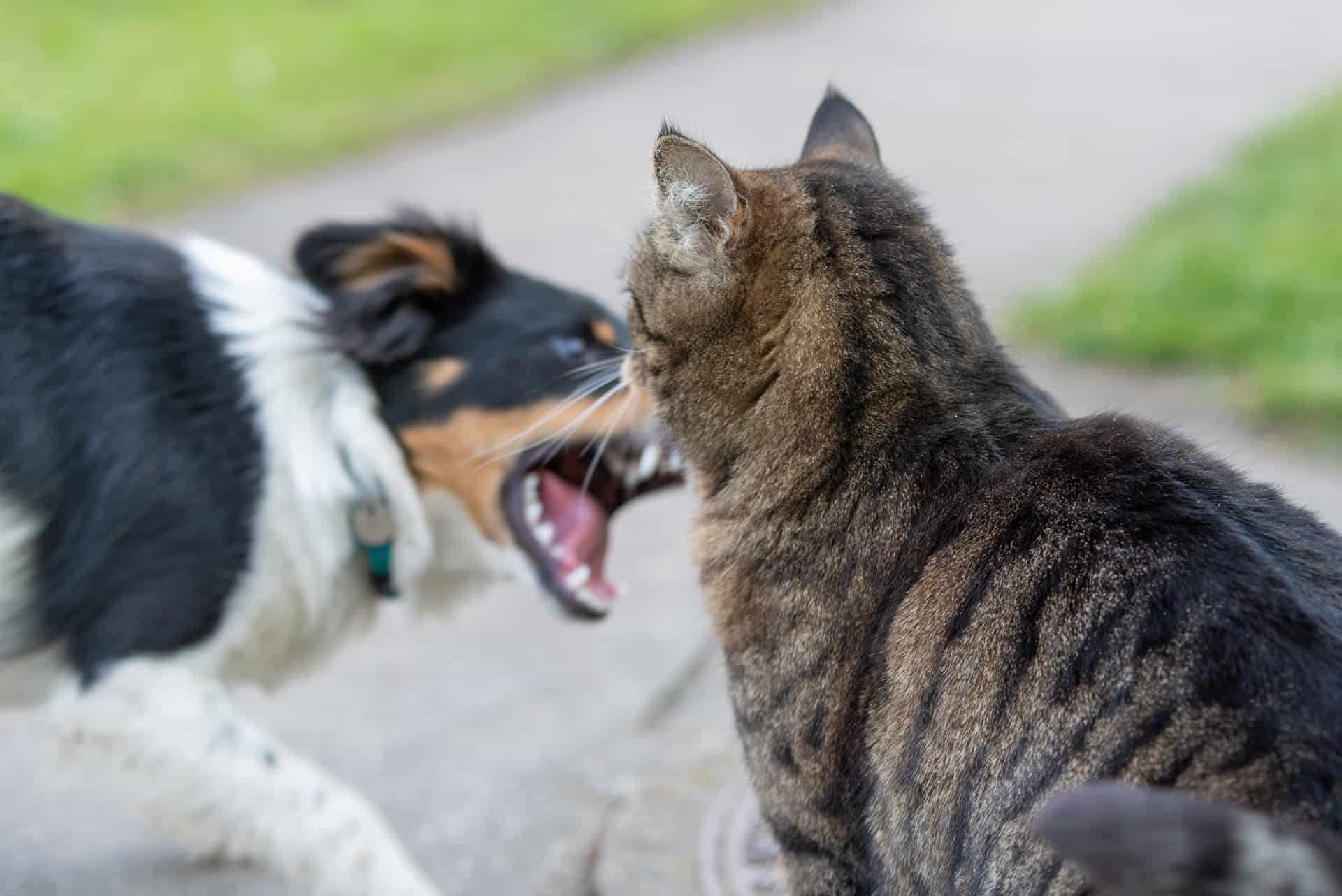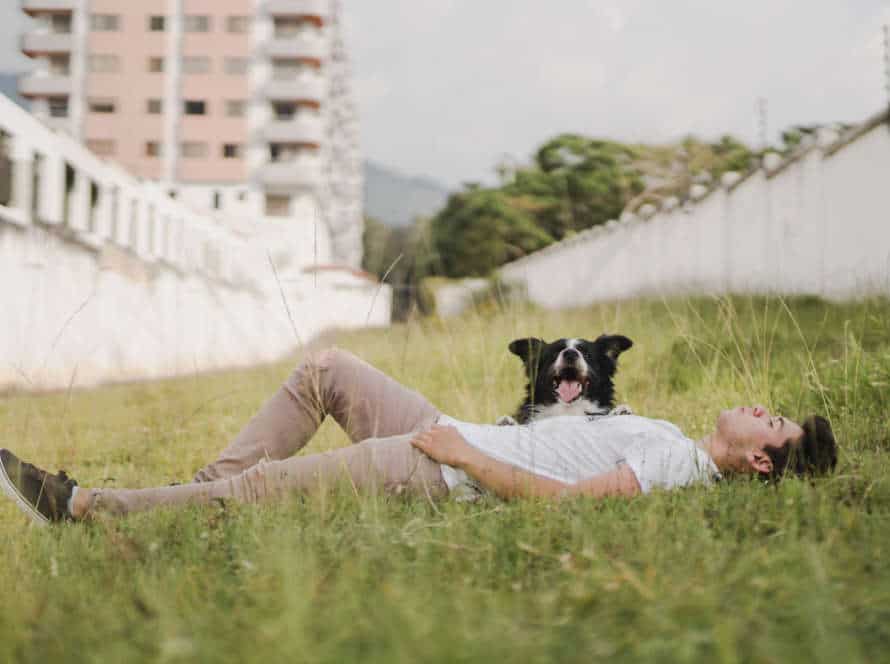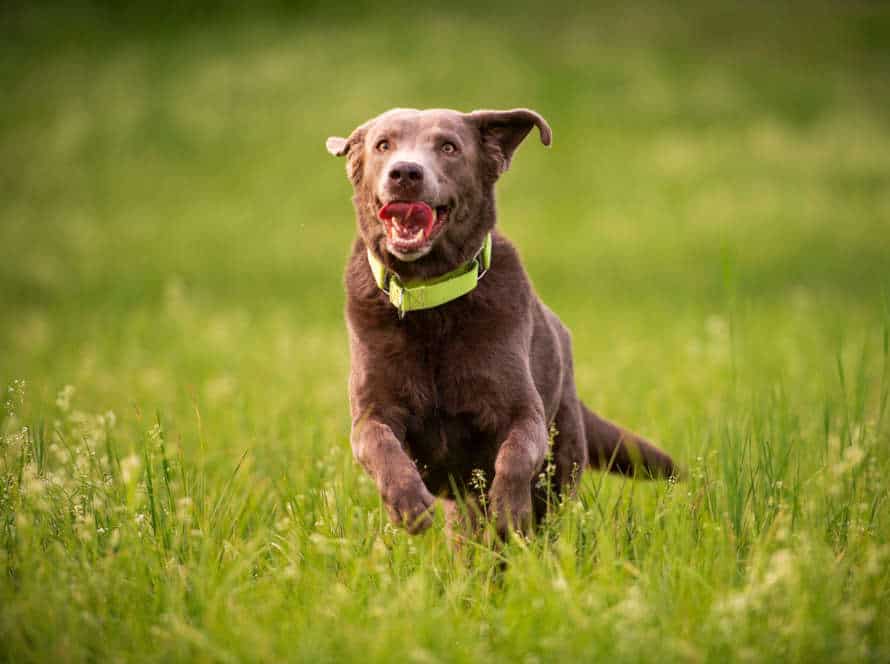Resolving Aggression in Dogs Adopted from Shelters
Aggression in shelter-adopted dogs is common. But, it can be fixed with the right technique and patience. Here are some tips to help:
- Seek help from a vet or animal behaviorist. They’ll evaluate the dog and give advice on how to train and medicate them.
- Create a safe space for the pup. A crate or a separate room can help them relax when feeling anxious or aggressive.
- Socialize the pup with people and pets. Start with short, controlled meetings.
- Train the dog. Use positive reinforcement to correct aggressive behavior and teach them to obey commands.
- Stay patient and calm. Don’t punish them for aggression. Reward them for good behavior instead.
With patience and training, you can overcome aggression in shelter-adopted dogs, and give them a loving home.
Understanding the Causes of Aggression
Adopted dogs from shelters may be aggressive for deep reasons. It’s tricky to fix the behaviour without knowing why it exists. To resolve aggressive actions, it’s essential to grasp their source. This article will explore the origins of aggression in sheltered dogs and how to handle them.
The Shelter Experience
Many dogs adopted from shelters have a history of aggression. To keep your new furry friend happy and healthy, it is essential to understand the causes of this aggression and how to deal with it.
Reasons for aggression in dogs can include fear or anxiety, territorial behavior, past maltreatment or neglect, or even their genetics.
Below are some strategies that can be used to manage aggression in your shelter dog:
- Get help from a professional trainer or behaviorist who has experience with shelter dogs.
- Create a consistent routine and clear boundaries for your pet.
- Gradually introduce your dog to different stimuli and social situations in a controlled environment.
- Use positive reinforcement techniques to reward good behavior.
With patience, consistency, and the right tools, your shelter dog can overcome aggression and become a loving and loyal companion.
Past Experiences with Humans or Other Animals
Adopted shelter dogs can display aggression to humans or animals, due to traumatic experiences. Knowing why is important for solving the problem.
Fear, lack of socialization and bad training could lead to aggression. Abuse or neglect in the past can make it worse. Here’s advice to help:
- Work with a professional to make a plan that fits your dog.
- Reward good behavior with positive reinforcement.
- Give your pup exercise and socialization chances.
- Trust and bond with your dog through steady, patient training.
It takes time and patience to resolve aggression in adopted dogs. Get help if needed.
Learned Behavior
Learned behavior is when dogs do something or react due to experience or teaching. Aggression is a typical learned behavior shelter dogs may have because of past events or mistreatments. To handle this, it is best to know the main cause. Reasons can be fear, anxiety, territory, socializing issues, or traumas.
Here are some steps to help:
- Get an expert dog trainer to make a plan.
- Offer a safe and calm place for your dog to get used to its new house.
- Make your dog trust you through positive reinforcement and setting limits.
- Stop situations that cause aggression.
With patience, training, and love, you can help reduce aggression in dogs from shelters.
Recognizing Aggression in Dogs
Pups from a shelter may act aggressive due to their history or a tense atmosphere. It’s vital to notice signs of aggression – so it can be managed and not worsen. Knowing the causes of the aggression and fixing them is the secret to success!
Common Signs of Aggression
Aggression in dogs is expressed in various ways. Dog owners must be aware of the usual signs of aggression, so they can protect others and their pet. Here are some common signs:
- Growling or snarling – this means the dog feels threatened and may bite.
- Stiff body – tense legs and a rigidly held tail indicate a defensive, aggressive attitude.
- Baring teeth – when the dog shows its teeth, it is a warning sign of aggression.
- Lunging or nipping – this signals the dog’s intent to bite and can be dangerous.
It is important to recognize these signs and take action to prevent an incident. Pro tip: If your dog is adopted from a shelter, get help from an experienced dog trainer or behaviorist to tackle aggression issues.
Aggression Triggers
Aggression triggers in dogs can differ based on breed, size, prior experiences, and coaching. Spotting these triggers is key to fixing aggression in dogs from shelters.
Common aggression triggers include:
- Fear – Dogs who feel scared or threatened may show signs of aggression, such as barking, biting, or growling.
- Resource guarding – Dogs who guard their food, toys, or territory may become aggressive if they think their resources are being threatened.
- Lack of socialization – Dogs who didn’t have the chance to be around other dogs or humans during their vital socialization period may become aggressive due to fear or anxiety.
- Pain or discomfort – Dogs in pain or discomfort may be more irritable and aggressive.
The right training, behavior modification strategies, and veterinary care can help with resolving aggression in dogs. It’s essential to get professional help and not punish or make aggression worse.
Assessing the Severity of Aggression
Assessing the severity of aggression in dogs is key for understanding and resolving aggressive behavior, especially in adopted shelter dogs. Here are some signs that may mean the dog’s aggression is severe:
- Stiff and tense body, closed mouth, wrinkled forehead, and dilated pupils.
- Growling, barking, lunging, or biting when triggered by food, toys, other dogs, or strangers.
- The aggression is unpredictable and doesn’t respond to standard training or behavior modification.
If you think your dog’s aggression is severe, seek assistance from a professional dog trainer or behaviorist. With patience and effort, you can help your dog overcome aggression and become a healthier and happier pet.
Addressing Aggression with Professional Help
A new pup from a shelter? That’s awesome! But, sometimes they come with baggage. Aggression is one of the most frequent problems. DIY solutions are tricky to manage. Professional help is a must! Here’s why it’s so important. It’ll assist with resolving aggressive behavior in adopted hounds.
Finding and Working with a Professional Dog Trainer or Behaviorist
Aggression in dogs is a real problem and requires the help of a professional dog trainer or behaviorist. Here’s how to find the right one:
- Research carefully. Look for certified trainers/behaviorists with experience in dealing with aggression. Check references and read reviews from past clients.
- Schedule a consultation. Talk about your pup’s behavior and aggression issues with the trainer/behaviorist. They’ll analyze your pup’s behavior and create a custom training plan for them.
- Be devoted. To get the best outcome, you have to stick to the training plan. It takes time, effort and patience to see results.
- Shelter pets. Dogs from shelters can have a tough past that affects their aggression. A great trainer/behaviorist will help you come up with strategies to help your pup face their fears and worries.
By taking the time to find the right expert, you can make sure your pup gets the support they need for a happy and healthy life.
Understanding Different Training and Behavior Modification Approaches
It is key to be aware of diverse training and behavior modification strategies to handle aggression in dogs, especially those from shelters.
- Positive reinforcement training uses treats or toys to motivate desirable behaviors. This can be useful for teaching new behaviors and encouraging good ones.
- Counter-conditioning works to alter a pup’s emotion towards a particular stimulus, such as other dogs, by linking it with something positive like rewards or playtime.
- Desensitization exposes the dog to a trigger, such as being alone or loud noises, in a regulated setting to reduce their fear or anxiety.
- Behavioral medication can be effective too, especially when combined with other behavior mod strategies.
It is important to work with a vet or professional dog trainer to determine the best approach for your pup’s needs.
Managing Aggressive Behaviors in the Home
Aggressive behavior can be hard to manage, especially at home. To address it, professional help is essential. If you adopted your dog from a shelter, here’s what you can do:
- Get advice from a dog trainer or behaviorist.
- Keep a logbook of your dog’s behavior and triggers.
- Be consistent and reward good behavior.
- Don’t punish your pet for aggression.
- Expose them to safe situations gradually, increasing the challenge over time.
With patience, consistency and professional help, you can manage aggressive behavior and get a peaceful home.
Addressing Aggression Without Professional Help
Committing to a shelter pup is no easy decision. And, things can be challenging when it comes to handling aggression. Shelter dogs may have gone through trauma or neglect which can contribute to this. However, you can tackle aggression in a shelter dog without the need for professional help. In this article, we’ll look at various approaches for effectively dealing with aggression in shelter dogs.
Creating a Safe Environment for You and Your Dog
Creating a secure environment for you and your pup requires addressing aggression without expert guidance, as well as dealing with aggression in dogs adopted from shelters. However, some cases of aggression require a professional trainer or behaviorist. Here’s how to address and resolve aggression in your dog:
Address aggression without pro help:
- Spot the triggers of your dog’s aggression and avoid them if you can.
- Teach your pup basic commands to make yourself the leader and improve communication.
- Use positive reinforcement to divert your dog’s behavior and reward great actions.
- Don’t resort to physical punishments, which can worsen aggression.
- Think about crate training to give your dog a safe place to escape to.
Resolve aggression in shelter dogs:
- Take time to know your new pup and build trust.
- Consult with the shelter team or a vet to learn about your dog’s background and behavior.
- Utilize positive reinforcement and consider getting the help of a professional trainer or behaviorist.
- Be patient and consistent in your training attempts.
Always remember that any form of aggression in a dog can be dangerous, so it must be dealt with quickly and properly. If you are unsure or uneasy about the situation, get professional help.
Pro tip: Safety is key when tackling aggression in dogs. Mind your own safety and the safety of others, and never put yourself or your pup in a dangerous position.
Establishing Clear Rules and Boundaries
Creating clear rules and boundaries when dealing with aggression in adopted shelter dogs is essential for sorting this without professional assistance. Here are some tips:
- Develop a fixed daily schedule which includes regular feed times, exercise and teaching sessions.
- Draw lines around personal space and house areas – like not permitting the dog on furniture or some rooms.
- Use positive reinforcement strategies, like giving treats or compliments for good behavior.
- Carry out effects for inappropriate behavior, such as timeouts or ignoring.
- Keep away from physical discipline or harsh techniques which can worsen aggression.
By setting up rules and boundaries, you can make a secure and pleasant atmosphere for your dog while tackling aggression without expert help.
Positive Reinforcement Training Techniques
Positive reinforcement training is an excellent way to help dogs adopted from shelters overcome aggression. This technique rewards good behavior instead of punishing bad behavior. Here’s how to use it:
- Offer treats, toys or praise for good behavior, e.g. sitting, staying calm or not barking.
- Talk calmly and confidently to your dog.
- Don’t use physical punishment as it may worsen their aggression and fear.
- Be steady in your approach and reward your dog consistently.
- Get professional help from a positive reinforcement specialist for extra guidance.
Preventing Aggressive Behavior in Shelter Dogs
Adopting a dog from a shelter is a great way to give them a second chance. However, some dogs may display aggressive behaviors. To ensure safety for the dog and family, it is important to address these behaviors early. Let’s look at what adopters can do to prevent or reduce aggressive behaviors in their dogs.
The Importance of Proper Socialization
Proper socialization is key for stopping and solving aggressive behavior in shelter dogs. Adopting a pup from a shelter may mean they’ve been through trauma and neglect, causing them to act aggressively towards humans or other canines. Socializing can help them learn new behaviors and get over their fear of people or situations they don’t know.
Here’s how correct socialization helps:
- Exposing them to new places, things, and socializing can give them more confidence and make them less reactive.
- Positive reinforcement training can teach them new behaviors and reward them for good behavior.
- Enrol your dog in a behavior modification program with the help of a certified trainer to give them structure and help them get over their aggression.
- Socialization can also stop aggression from developing in puppies by giving them positive experiences during their critical socialization period.
Pro Tip: If you’re adopting a shelter pup with a history of aggression, make sure to talk to a certified dog behaviorist for a personalized training plan.
Early Intervention and Training
Early action and training is essential when it comes to preventing or settling aggressive behavior in dogs that have been adopted from a shelter. Especially for those with a history of aggression, taking early steps can make a big difference in changing behavior.
Things to consider:
- Get help from a trainer that knows how to handle aggressive dogs.
- Make routines and rules in your home for a sense of security and safety.
- Use positive reinforcement to motivate good behavior and stop aggressive behavior.
- Let your dog experience different places and situations gradually.
- Be safe and use a leash and muzzle if your dog shows any aggression.
With early intervention and training, you can help a shelter dog overcome aggressive behaviors and live a happy life in their new home.
Identifying Potential Aggression and Reducing Stress in Shelters.
Spotting potential aggression and calming stress in shelters is vital to stop aggressive behavior in shelter dogs and help resolve aggression in dogs taken from shelters. One way to detect potential aggression in a shelter dog is by looking at its body language. Signs of aggression may include a stiff posture, growling, showing teeth, and a fixed or intense stare.
For calming shelter dogs and to stop aggression, here are a few tips:
- Give the dog a comfy and secure living space.
- Offer the pup lots of exercise, socialization, and positive reinforcement training.
- Keep away from things that may bring out the dog’s aggression, such as overcrowding or fighting over food.
- Work with a professional dog behaviorist or trainer to manage any signs of aggression and assist the dog to settle into its forever home.
Frequently Asked Questions
Q: Why do shelter dogs become aggressive?
A: Shelter dogs may exhibit aggression due to fear, lack of socialization or past traumatic experiences.
Q: How can I manage my newly adopted dog’s aggression?
A: It is recommended to seek professional help from a certified dog trainer or behaviorist. They can help you create a training plan and provide guidance throughout the process.
Q: Is it possible to rehabilitate an aggressive shelter dog?
A: Yes, with patience, consistency and professional help, many aggressive shelter dogs can become well-behaved and friendly.
Q: Will medication help with my dog’s aggression?
A: This should be discussed with a veterinarian or a veterinary behaviorist. Medication may be recommended if your dog’s aggression is caused by a mental health issue.
Q: How can I prevent my shelter dog from becoming aggressive?
A: Socialization, training and a consistent routine can help prevent aggression in dogs. It is important to expose them to new experiences and situations in a positive way.
Q: Can aggressive shelter dogs be adopted by families with children?
A: This will depend on the severity of the aggression and the family’s ability to provide a safe environment for the dog and the children. It is recommended to work with professionals to assess the dog’s behavior and determine if it is safe to place them in a family with children.







